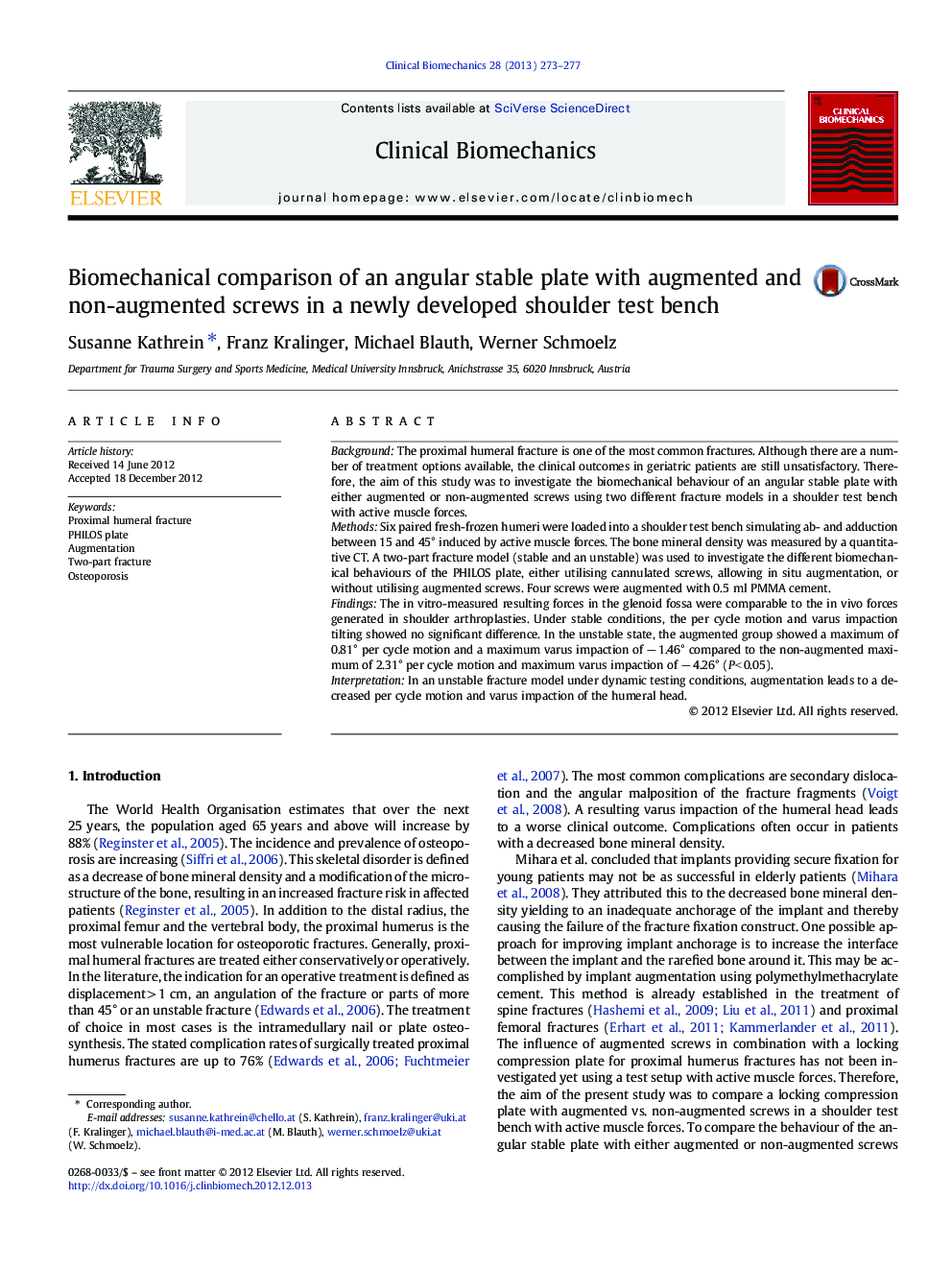| Article ID | Journal | Published Year | Pages | File Type |
|---|---|---|---|---|
| 4050492 | Clinical Biomechanics | 2013 | 5 Pages |
BackgroundThe proximal humeral fracture is one of the most common fractures. Although there are a number of treatment options available, the clinical outcomes in geriatric patients are still unsatisfactory. Therefore, the aim of this study was to investigate the biomechanical behaviour of an angular stable plate with either augmented or non-augmented screws using two different fracture models in a shoulder test bench with active muscle forces.MethodsSix paired fresh-frozen humeri were loaded into a shoulder test bench simulating ab- and adduction between 15 and 45° induced by active muscle forces. The bone mineral density was measured by a quantitative CT. A two-part fracture model (stable and an unstable) was used to investigate the different biomechanical behaviours of the PHILOS plate, either utilising cannulated screws, allowing in situ augmentation, or without utilising augmented screws. Four screws were augmented with 0.5 ml PMMA cement.FindingsThe in vitro-measured resulting forces in the glenoid fossa were comparable to the in vivo forces generated in shoulder arthroplasties. Under stable conditions, the per cycle motion and varus impaction tilting showed no significant difference. In the unstable state, the augmented group showed a maximum of 0.81° per cycle motion and a maximum varus impaction of − 1.46° compared to the non-augmented maximum of 2.31° per cycle motion and maximum varus impaction of − 4.26° (P < 0.05).InterpretationIn an unstable fracture model under dynamic testing conditions, augmentation leads to a decreased per cycle motion and varus impaction of the humeral head.
